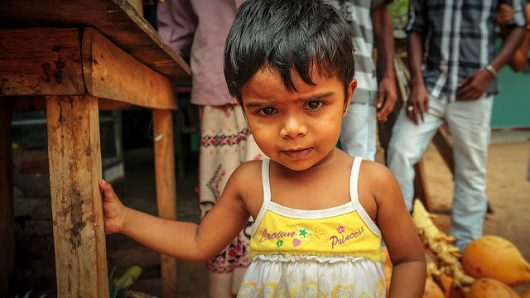Girls’ Education in Maldives

Despite its beautiful beaches, blue lagoons and extensive reefs, Maldives is one of the poverty-stricken countries battling its developmental growth. Roughly 35 percent of Maldives is under 18 years old, making education a key area for social investment, especially in girls’ education. While the primary education is achieved equally by boys and girls, girls’ education in Maldives ends before they move to secondary education, which remains a big challenge for the Maldives government to combat.
The literacy rates for both adults and youth are the highest in the region and exceed the world average. Maldives has made such progress in achieving universal primary education with perfect gender parities, despite the devastating tsunami of 2005 that swept over most of its islands. However, it remains a challenge to ensure quality remains a key concern in primary education and to encourage girls to pursue secondary and higher education.
Facts About Girls’ Education in Maldives
- 100 percent enrollment ratio in primary education
- 99 percent of pupils starting grade 1 reach grade 5
- 65 percent enrollment ratio in lower secondary education
- 7 percent enrollment ratio in higher secondary education
- 92 boys for every 100 girls in primary education
- 112 boys for every 100 girls in secondary education
The government of Maldives considers gender disparity a non-issue and does not guarantee a free and compulsory primary education for all girls. The Maldives’ Ministry of Education’s 2006 statistics indicate that every primary school age boy and girl in the country are enrolled in primary school. Moreover, 99 percent of girls who have completed primary school have continued into secondary education. However, after the 2007 Asian Development Bank Assessment, the government is taking steps to encourage girls to pursue postsecondary education.
Challenges and Barriers to Girls’ Education in Maldives
Maldives is located on a 1,000 kilometer-long chain of islands where the cost of transporting teachers and students becomes an expensive affair. Since transportation among islands is expensive, many children are at risk of being invisible, meaning they are unable to receive an education or they move away from parents to attend school. In addition, Maldives is dependent on expatriate teachers, and the quality of education is uneven for the 70 percent that lives on islands far from the capital, where two-thirds of teachers remain untrained, libraries and separate toilets for girls are unavailable and children with special needs have little access to school. Because of the lack of training, especially in gender sensitivity, curriculum materials and textbooks have strong gender biases.
Due to strong gender biases, women’s participation in politics and senior management levels is very low. In ADB’s (2007) analysis, women constitute only 15 percent of the legislators and senior officials in Maldives, and only a third of government officials are female. Gender division of labor is evident in public service employment with women making up 54 percent of the temporary positions, primarily to carry out tasks that are culturally “suitable” to them. For example, in the sectors of education, health and welfare, women are supervised and managed by senior ranking male employees.
Improvements in Girls’ Education in Maldives
In a country where settlements are sparsely scattered across small islands, the government has established at least two primary schools in each atoll to improve girls’ education in Maldives. With support from UNICEF, the pilot initiative of child-friendly schools, which was started with 22 schools, was scaled up to 105 during the post-tsunami period.
In addition, UNICEF and the Ministry of Education have come up with a novel solution: a series of 20 Teacher Training Centres (TRCs), one in each of the atolls that make up the country. These TRCs provide teachers and students with a trove of modern online teaching and learning tools at the touch of their fingertips, thanks to banks of high-speed Internet-enabled computers, SmartBoards that allow for interactive training at a distance and a website being developed by Cambridge International Examinations that are adapted specifically to Maldives. The Maldives Government has recognized the importance of training school teachers and heads supervisors in child-friendly approaches.
Recommendations
A report suggests that a gender audit should be conducted at the institutional level, so issues related to the subordinate role of women in organizations are highlighted. There should be a political will to spark organizational structures that allow gender equality in the workplace, which in turn can encourage girls to continue school at higher levels, as well as to pursue learning in fields that have traditionally been male-dominated. School and teacher training focused projects should make their output, outcome and impact indicators more explicit about progress milestones in terms of closing the gender gaps.
Although there is a good enrollment of girls and boys in the primary school, gender disparity exists in access to and attainment in secondary and post-secondary education and vocational training programs. The stereotypical perceptions of gender roles limit girls’ and women’s mobility and restrict their educational participation beyond primary level, as such opportunities are available only in urban areas or city centers. Girls’ education in Maldives is very low at the secondary level and measures have been taken by the government to motivate girls to study further and take-up jobs which are male-dominated.
– Preethi Ravi
Photo: Flickr
